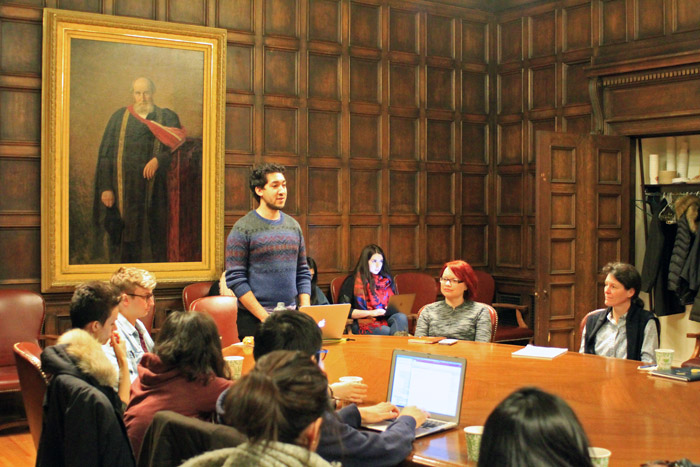McGill staff has seen little change in diversity since the 2008 implentation of an employment equity policy. Students and faculty came together to discuss issues of employment equity this past Thursday at a panel entitled Diversity In Academia. Hosted by the Students’ Society of McGill University (SSMU), the panel featured commentary from four McGill faculty members: Associate Professor of Educational and Counselling Psychology Tara Flanagan, Professor of Civil Engineering Susan Gaskin, Professor of Law Adelle Blackett, and Professor of Sociology Zoua Vang.
The panel opened with a presentation from SSMU equitable hiring researcher Carolyn Huang on SSMU’s research report: Equity in the Hiring of McGill Academic Staff. The report highlighted the lack of changes McGill has seen since the 2008 employment equity policy.
“Since the formal implementation [of the policy] in 2008, the percentage of employees that identify as aboriginal and people with disabilities has actually declined,” Huang said. “The employees that identify as women was only raised by one per cent since 2008 [and] 0.9 per cent for ethnic minorities.”
The report attributed these failings to a lack of communication of equity policies in the hiring process of new faculty.
“There’s no formalized communication between upper administration and departmental hiring committees,” Huang said. “There’s a lack of leadership among upper administration on equity, and in comparison to other universities which we examined […] McGill doesn’t have any particular programs or even an official equity office other than the [Social Equity and Diversity Education] (SEDE) office, which doesn’t have power to influence the upper administration’s decision making.”
The panellists were then asked to discuss what barriers they believe exist for designated minority groups. Flanagan addressed issues of inaccessibility on McGill campus for individuals with physical disabilities.
“A couple of weeks ago, a colleague and I were hosting an event at the Faculty Club that was supposed to be a place that was accessible,” Flanagan said. “We got the measurements for the elevator that went [up] from the main floor [and] sent that to our listed invitees [….] There was a wheelchair user who had a wheelchair that fit within the specifications, but once arriving to the elevator, it was clear that the invitee and the wheelchair would both not fit in the same time, so the wheelchair was brought up by a staff member at the faculty club and the person who was the wheelchair went up in the elevator without a wheelchair and had to have assistance. It was embarrassing and difficult for everybody involved. Even when we have a place that is on-paper accessible, there are still many nuances that we’re clearly not meeting.”
Gaskin spoke to the issue of subpar mentorship that is offered to women in academia when compared to their male counterparts.
“You’re not necessarily discriminated against all through your schooling, but […] we [also] don’t get the same encouragement,” Gaskin said. “You may be very good at math or very good at science but you’re not told […] you could be an engineer or you could be a doctor. So it’s more a lack of mentoring.”
Vang addressed the difficulties that can arise for professors who are racial minorities. One difficulty, Vang explained, stemmed from the misperception that there is not a pool of qualified minority candidates that the university could hire from.
“Minority candidates are viewed with scrutiny, and then with greater suspect,” Vang said. “If a minority candidate has the opportunity to get a job offer […] their qualifications are again questioned [….] There’s a lot of research that shows that racial minority faculty receive much poorer evaluations, and their poor course evaluations are then used by administrators or departmental heads as examples that minority faculty are less skilled teachers, when in fact a lot of the bias in those evaluations stem from conscious and subconscious bias and racial prejudice.”
According to Flanagan, the only way to correct these inequities in academia is to ensure that effort is being made from all levels of the administration.
“I think it’s very important to take concrete actions from the ground up, let’s say hiring committees, in our classes, and how we teach, but also from the top down,” she said. “We need to be having very clear policies about the kind of actions that we take.”









